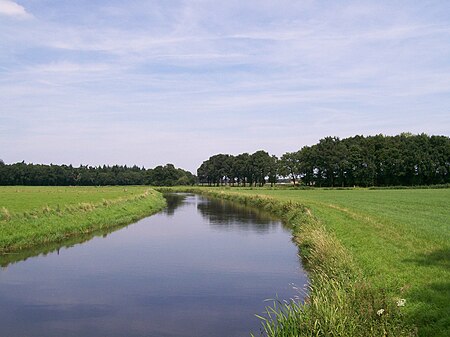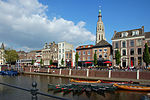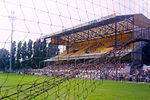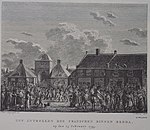Aa of Weerijs
Belgium river stubsDintel basinEurope river stubsNetherlands geography stubsPages with Dutch IPA ... and 4 more
Rivers of Antwerp ProvinceRivers of BelgiumRivers of Flemish BrabantRivers of the Netherlands

The Aa of Weerijs (Dutch pronunciation: [ˌaː ʔɔf ˈʋeːrɛis]) is a river in Belgium and Netherlands, where it arises from the confluence of the Great Aa (in Wuustwezel) and the Small Aa (in Brecht). In Breda (which means the broad Aa) it is the river in the canals of this city. The name Broad Aa is a reference to its confluence with the Upper Mark. The conjoined rivers continue flowing as the Mark. The width of the Aa of Weerijs varies from 5 meters to the border with Belgium up to 15 meters in Breda. The valley is about 3 kilometers wide.
Excerpt from the Wikipedia article Aa of Weerijs (License: CC BY-SA 3.0, Authors, Images).Aa of Weerijs
Belcrumweg, Breda Centrum
Geographical coordinates (GPS) Address Nearby Places Show on map
Geographical coordinates (GPS)
| Latitude | Longitude |
|---|---|
| N 51.5926 ° | E 4.7714 ° |
Address
Koning Willem-Alexanderbrug
Belcrumweg
4811 AD Breda, Centrum
North Brabant, Netherlands
Open on Google Maps










